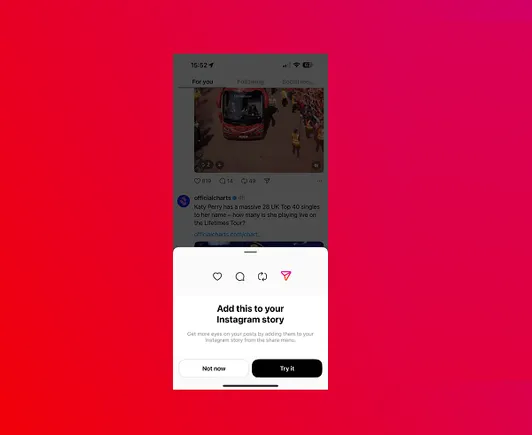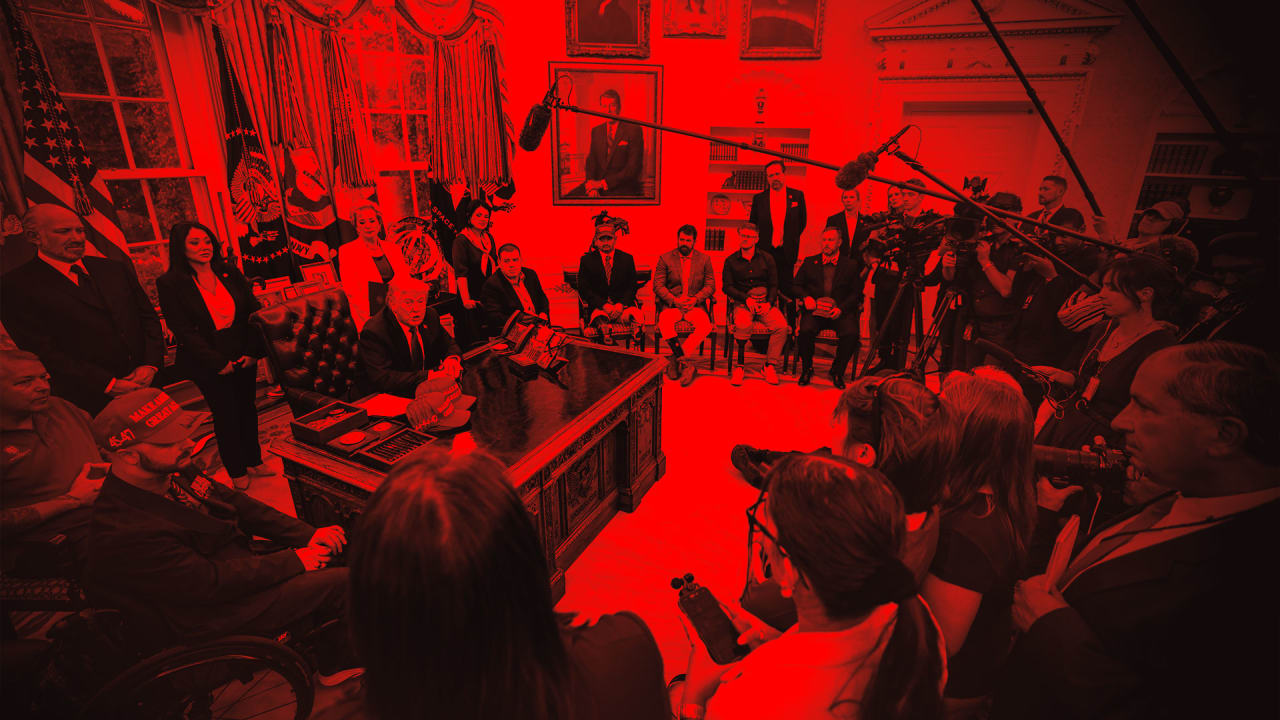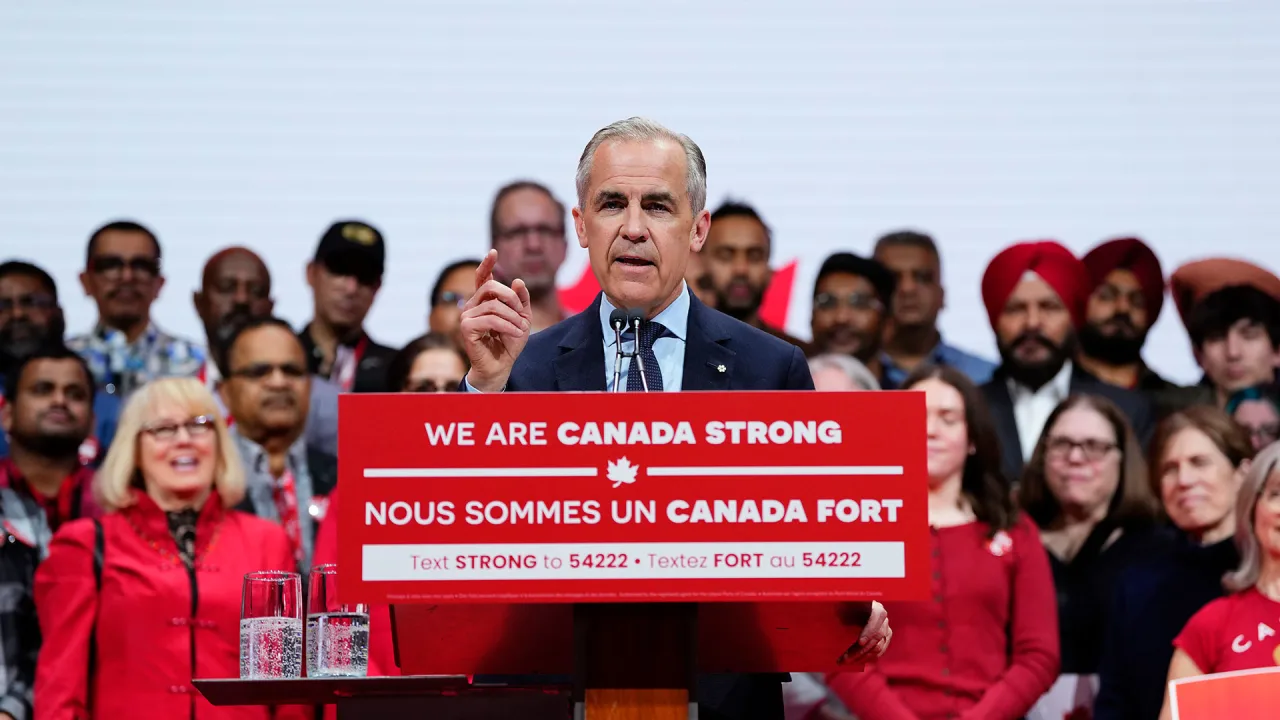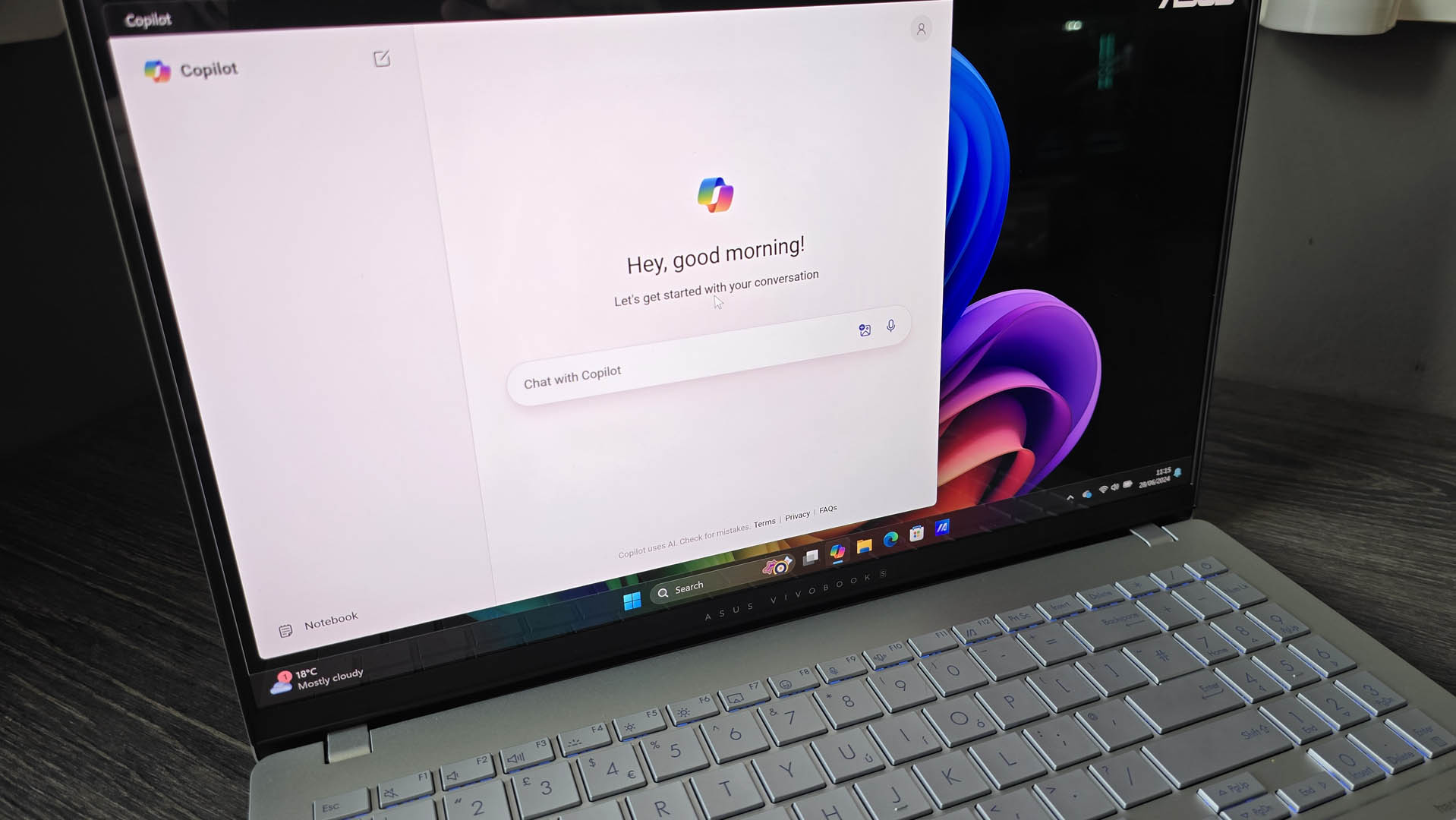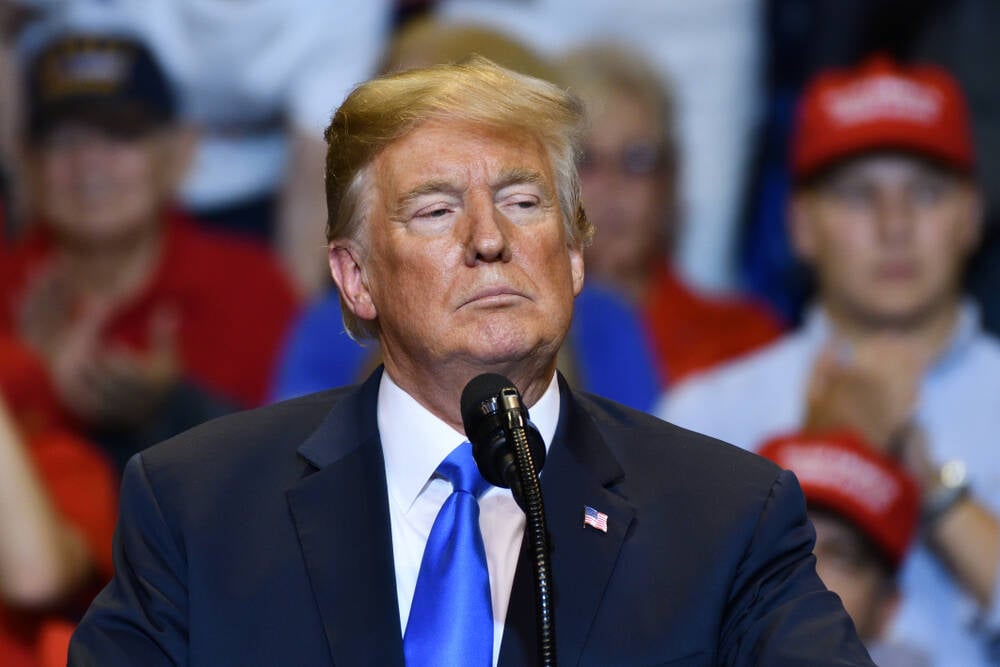The insidious design of Trump’s second term
When Trump first landed in the White House in 2016, even he seemed surprised to be there. Without a transition staff in place, the Obama administration team helped shepherd in the new president while positions sat unfilled. Whereas Hillary Clinton had a complete digital site built to usher in her new presidency that would never be seen, Trump had none. But for his second term, Trump’s team was more prepared. On the first day of his presidency, he appeared on WhiteHouse.gov with a hero’s welcome. In a video worthy of Michael Bay, helicopters fly through the mountains before delivering Trump to the White House lawn to herald a new age. Fighter jets thunder overhead. Trump squints into the distance. A bald eagle flies by. [Screenshots: White House/YouTube] The 100 days that have followed have proven blindsiding to anyone who thought Trump’s second term would constitute little more than a few tax cuts to the rich. In this brief window, Trump has rewritten the propaganda playbook for the modern political age by marrying well-proven tactics from decades past with a savvy approach to our current media landscape. His approach to governing is as much a practice of world-building as it is policy building. He has woven together imagery, rhetoric, and technology to create an unnervingly convincing (if in large part illegal!) vision of the world he wants to sell (or force upon) his constituents. Trump has leveraged craftily designed aesthetics to position his destructive policies as necessary and his self-concerned personality as heroic, all while he dismantles the institutions in place to question him. A playbook from the past—and present From the earliest days of the presidency, we’ve witnessed a mass erasure of both the topics and people that the administration doesn’t support. It happened in the digital world with the deletion of trans rights pages from WhiteHouse.gov and stories about Navajo Code Talkers removed from the pages of the Department of Defense. In the physical world, the erasure shows up as Trump eliminates civil rights artifacts from Smithsonian institutions and scrubs the Black Lives Matter mural from 16th Street in Washington, D.C. Many of these deletions are part of an executive order around “restoring truth in American history.” Fascists routinely erase history to write a new one. And when it comes to this, and all of Trump’s other communication tricks, there’s not much that’s original about them. [Screenshot: whitehouse.gov] “All the techniques he uses are techniques of the past. The aesthetics are aesthetics of the present,” says Barbie Zelizer, the Raymond Williams professor of communication and director of the Center for Media at Risk at the University of Pennsylvania. She’s also co-editor of Journalism: Theory, Practice and Criticism. Zelizer believes that the entire ethos of Trump’s messaging is anchored in the early Cold War when, in the name of national security, Wisconsin Senator Joseph McCarthy declared an all-out war on communism and anyone suspected to be supportive of it. Zelizer points out that Trump’s statement from 2016—“I could stand in the middle of Fifth Avenue and shoot somebody and I wouldn’t lose any voters”—has historical precedent from this era. In 1954, pollster George Gallup described McCarthy’s unchecked appeal to the public with a similar framing: “Even if it were known that McCarthy had killed five innocent children, [voters] would probably still go along with him.” The key word uniting the messaging of Trump and McCarthy? Enmity. “It’s us versus them. When he is able to claim accolades for himself or for his administration, it is always based on an assumption that his administration is winning out over the enemy,” says Zelizer, who notes there is always an enemy beyond (like China) and an enemy within (like student protestors or the judges upholding our legal system). “And whomever the enemy is at any point—if that’s democratic leaders, or the media, or universities, take your pick—they’re all substitutes in a rotation.” Where Zelizer sees Cold War influence, Edel Rodriguez—the Cuban-born illustrator and leading visual critic of Trump—sees the influence of the UFC and WWE. Without a hint of irony, Rodriguez points to the machismo-laden, fight-first mentality of this programming as parallel to both power-assertive fascist leadership and the greater Trump media strategy. He also admits to their strange appeal. “I watch Ultimate Fighting videos because they’re nuts. But it’s drama. It’s something,” he says. “And on the other side, you have the Democrats doing nothing.” Donald Trump and Elon Musk (lower left) watch UFC 314 at the Kaseya Center in Miami in the early hours of April 13, 2025. [Photo: Mandel Ngan/AFP/Getty Images] The enemies that Trump has targeted pair perfectly with another Trump messaging technique Zelizer says is straight out of the Cold War (but also fits fine within a WWE ring rant): that assertions can
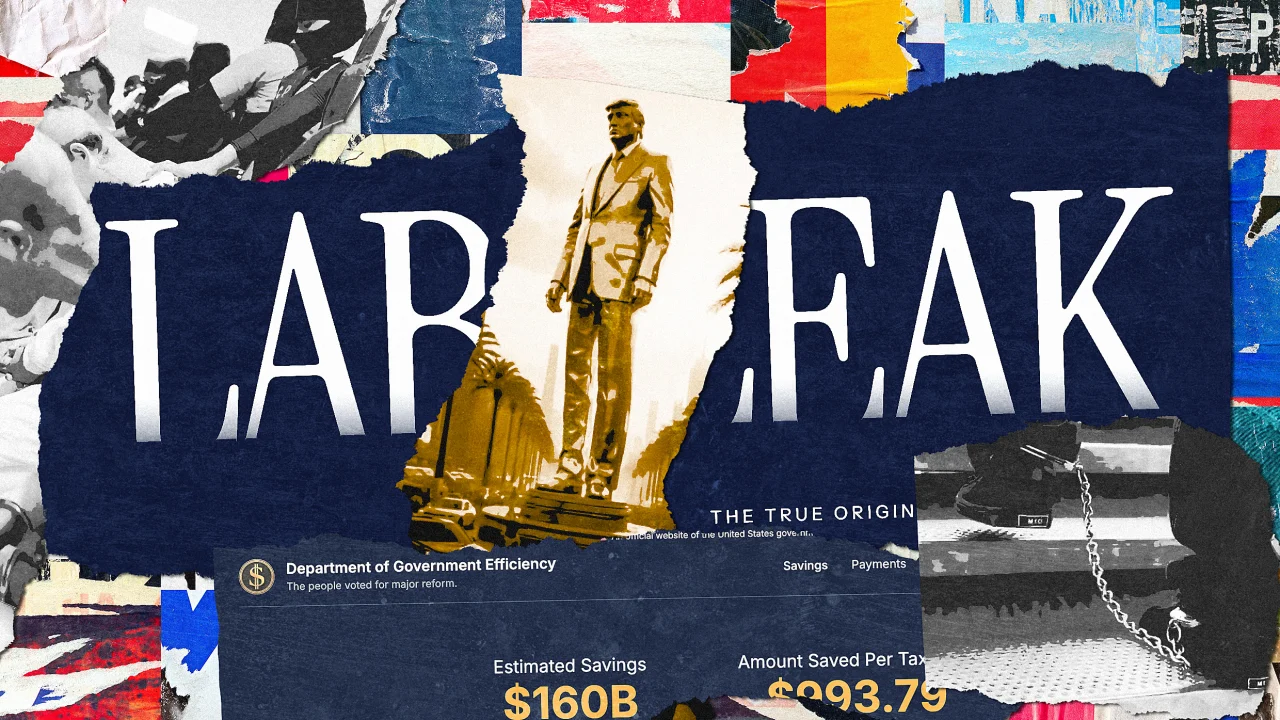
When Trump first landed in the White House in 2016, even he seemed surprised to be there. Without a transition staff in place, the Obama administration team helped shepherd in the new president while positions sat unfilled. Whereas Hillary Clinton had a complete digital site built to usher in her new presidency that would never be seen, Trump had none.
But for his second term, Trump’s team was more prepared. On the first day of his presidency, he appeared on WhiteHouse.gov with a hero’s welcome. In a video worthy of Michael Bay, helicopters fly through the mountains before delivering Trump to the White House lawn to herald a new age. Fighter jets thunder overhead. Trump squints into the distance. A bald eagle flies by.

The 100 days that have followed have proven blindsiding to anyone who thought Trump’s second term would constitute little more than a few tax cuts to the rich. In this brief window, Trump has rewritten the propaganda playbook for the modern political age by marrying well-proven tactics from decades past with a savvy approach to our current media landscape.
His approach to governing is as much a practice of world-building as it is policy building. He has woven together imagery, rhetoric, and technology to create an unnervingly convincing (if in large part illegal!) vision of the world he wants to sell (or force upon) his constituents. Trump has leveraged craftily designed aesthetics to position his destructive policies as necessary and his self-concerned personality as heroic, all while he dismantles the institutions in place to question him.
A playbook from the past—and present
From the earliest days of the presidency, we’ve witnessed a mass erasure of both the topics and people that the administration doesn’t support. It happened in the digital world with the deletion of trans rights pages from WhiteHouse.gov and stories about Navajo Code Talkers removed from the pages of the Department of Defense. In the physical world, the erasure shows up as Trump eliminates civil rights artifacts from Smithsonian institutions and scrubs the Black Lives Matter mural from 16th Street in Washington, D.C.
Many of these deletions are part of an executive order around “restoring truth in American history.” Fascists routinely erase history to write a new one. And when it comes to this, and all of Trump’s other communication tricks, there’s not much that’s original about them.
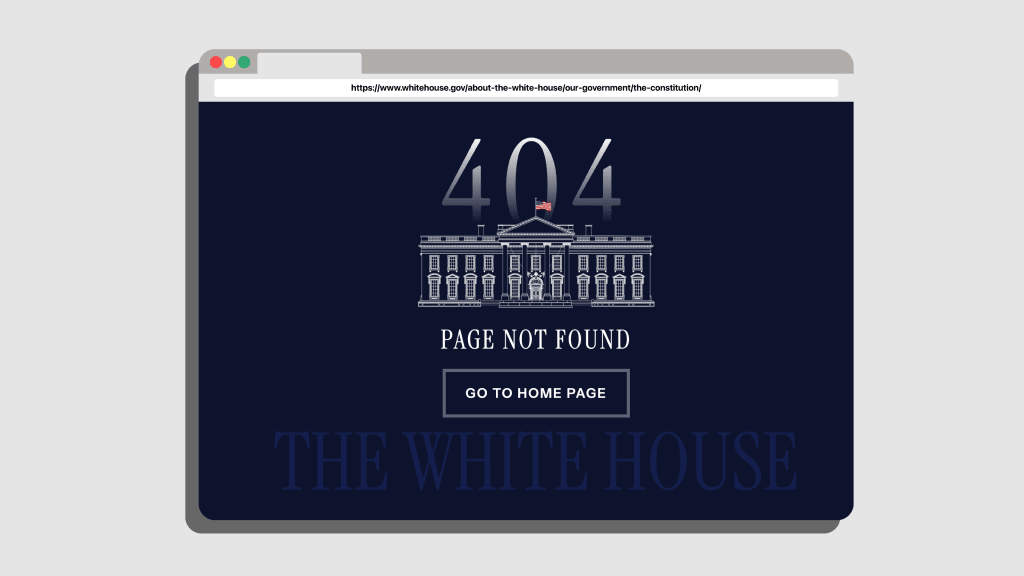
“All the techniques he uses are techniques of the past. The aesthetics are aesthetics of the present,” says Barbie Zelizer, the Raymond Williams professor of communication and director of the Center for Media at Risk at the University of Pennsylvania. She’s also co-editor of Journalism: Theory, Practice and Criticism.
Zelizer believes that the entire ethos of Trump’s messaging is anchored in the early Cold War when, in the name of national security, Wisconsin Senator Joseph McCarthy declared an all-out war on communism and anyone suspected to be supportive of it. Zelizer points out that Trump’s statement from 2016—“I could stand in the middle of Fifth Avenue and shoot somebody and I wouldn’t lose any voters”—has historical precedent from this era. In 1954, pollster George Gallup described McCarthy’s unchecked appeal to the public with a similar framing: “Even if it were known that McCarthy had killed five innocent children, [voters] would probably still go along with him.”
The key word uniting the messaging of Trump and McCarthy? Enmity.
“It’s us versus them. When he is able to claim accolades for himself or for his administration, it is always based on an assumption that his administration is winning out over the enemy,” says Zelizer, who notes there is always an enemy beyond (like China) and an enemy within (like student protestors or the judges upholding our legal system). “And whomever the enemy is at any point—if that’s democratic leaders, or the media, or universities, take your pick—they’re all substitutes in a rotation.”
Where Zelizer sees Cold War influence, Edel Rodriguez—the Cuban-born illustrator and leading visual critic of Trump—sees the influence of the UFC and WWE. Without a hint of irony, Rodriguez points to the machismo-laden, fight-first mentality of this programming as parallel to both power-assertive fascist leadership and the greater Trump media strategy. He also admits to their strange appeal. “I watch Ultimate Fighting videos because they’re nuts. But it’s drama. It’s something,” he says. “And on the other side, you have the Democrats doing nothing.”

The enemies that Trump has targeted pair perfectly with another Trump messaging technique Zelizer says is straight out of the Cold War (but also fits fine within a WWE ring rant): that assertions can be made without evidence. “In order to get people to understand what he’s about and to support him, he doesn’t need evidence. He can just make the claim,” she says.
Wave after wave of unbridled fabrications—Trump was recorded making 30,573 false or misleading claims during his first presidency alone—contribute to Trump’s undermining of fact-based institutions in journalism and research. Trump’s team is throwing a one-two punch of despot-born propaganda while simultaneously dismantling the country’s system of checks and balances.
The dizzying presentation of official misinformation
Under the Obama administration, WhiteHouse.gov became an extension of the presidential brand—a tradition carried on by Joe Biden—full of largely apolitical resources for American citizens. Trump, too, uses this channel to look downright presidential when he wants to, creating a stark contrast to something like Trump’s sickening “ASMR” deportation video. Yet even on WhiteHouse.gov, Trump’s almost surreal, salesman-y moments crop up.

In April, the Trump team replaced WhiteHouse.gov’s former COVID-19 resources site with a new page it calls Lab Leak: The True Origins of COVID-19. It features a bold typographic header that could be a poster for an Apple TV+ original. Below that, there’s a perfectly executed presentation of unsubstantiated claims—like that COVID-19 was born in a Wuhan lab, or that public health officials “often mislead” the populace and “demonized alternative [COVID-19] treatments . . . in a shameful effort to coerce and control.”
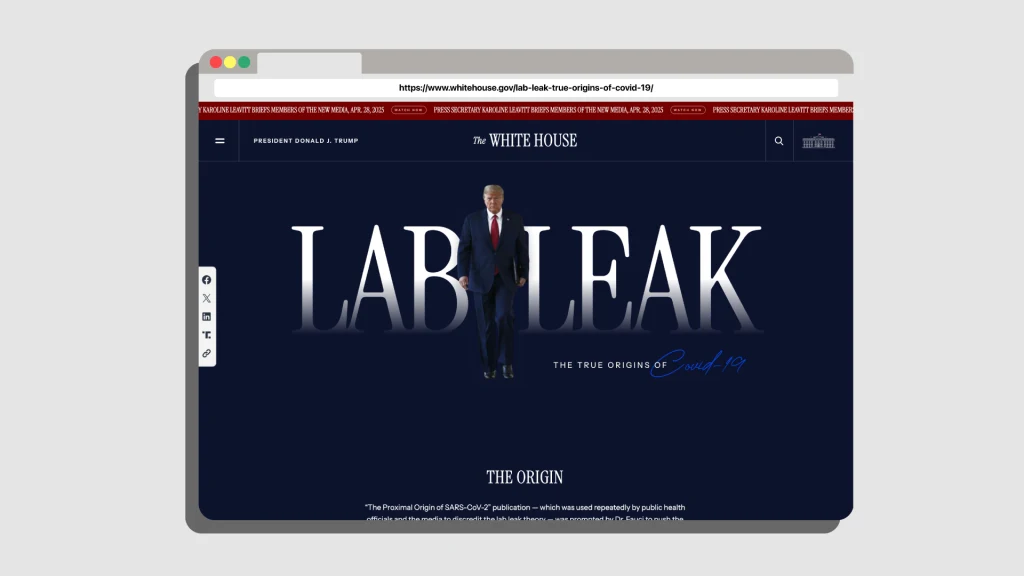
Classic information hierarchy organizes this page with bullet points, a map, and even the option to download the official House subcommittee report (that ignores the official Democratic subcommittee debunking). It’s official-looking enough that most people won’t notice that the site replaces vaccine guidance, or that it fails to mention Trump’s crucial work in funding a COVID-19 vaccine during his first term.
“It’s distrust wrapped in credibility,” says an award-winning information designer who preferred to remain anonymous. “The power of this design isn’t in what it says but how it mimics the visual codes of accountability. It looks like a government report, but it’s a story engineered to look like a discovery.”

A similar approach is taken on the Department of Government Efficiency website, which keeps a running receipt of the “savings” generated by its cost-cutting programs. At a glance, this is government transparency at its finest. In practice, The New York Times has found multiple, significant errors—the largest of which miscalculated $8 million in savings as $8 billion in savings (which, at the time, represented half of the $16 billion DOGE had claimed to save). After being called out for the errors, the DOGE site was redesigned to make the accounting more difficult to parse, claiming the updates were for “security.”
“I’m trying to unpack it in an intelligent way, and it’s tough, because in some ways the ploy is just so obvious, right?” says Dino Citraro, cofounder of the “do good with data” visualization firm Periscopic, which has created projects for groups including UNICEF and the Gates Foundation. “It’s disingenuous messaging, or just falsified stuff wrapped up in stuff that looks very official.”
False transparency is particularly disarming in a world where foundational facts—like the safety and efficacy of vaccines, or impact of CO2 emissions on our planet—have been recast as lies. But the truth is, even to professionals in data presentation, actually getting an engaged audience to explore information in order to understand its sourcing and veracity is incredibly difficult. The public’s waning attention span is working in Trump’s favor.
“There was always this sort of uncomfortable idea that you could manipulate the data to say whatever you wanted,” says Citraro of his own field. “For us, it meant [creating] a deep, interactive exploration so you could verify and find your own insights . . . but it felt like that became a burden.” Indeed, even for those willing to take the time to do the research—few of us, for sure—data often only reinforces prior held beliefs.
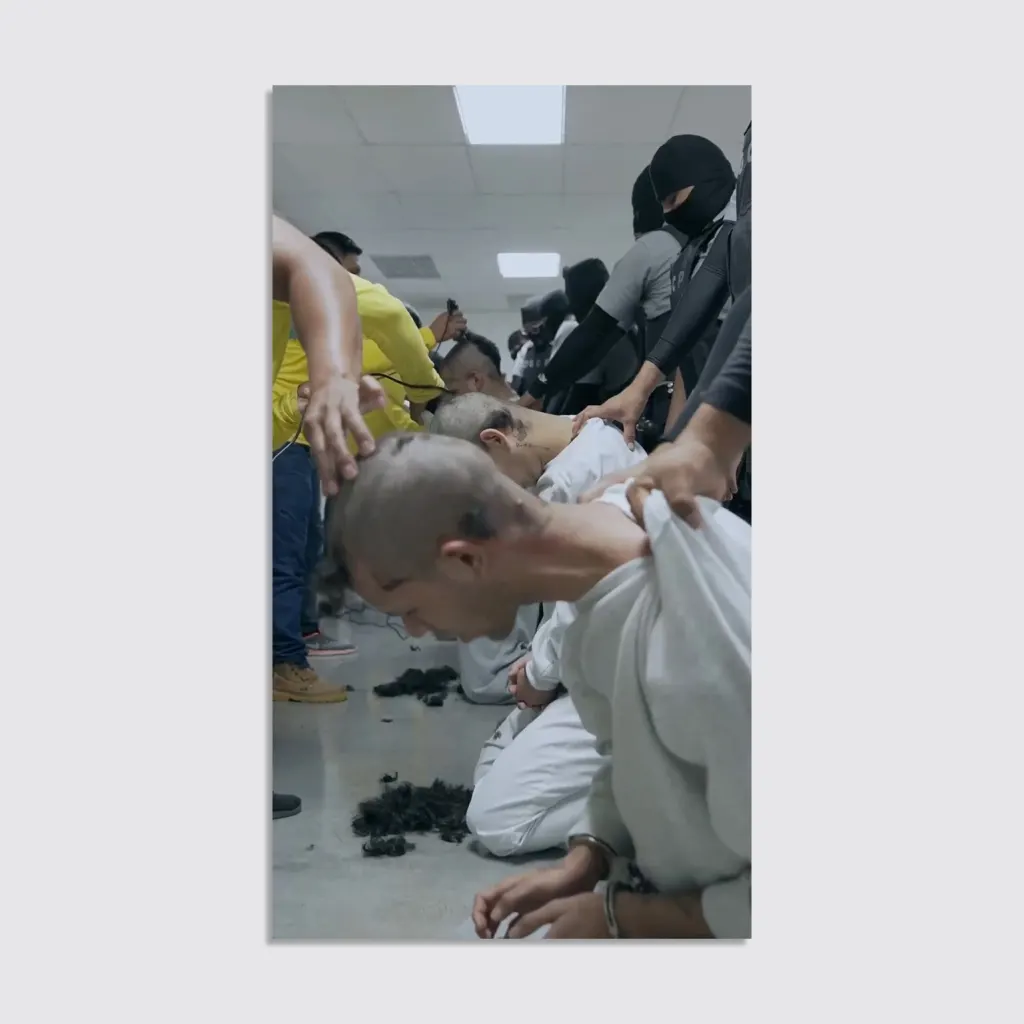
The messy distraction of hate
In the place of information, we get propaganda—a dramatic editorialization of history and current events alike. For instance: Despite court orders challenging the legality of Trump’s deportations, a dramatic one-minute film promoted the deportation of 17 men. In what could be a Netflix trailer produced by El Salvador with support of the U.S. government, soldiers are shown in slow motion escorting the “violent criminals” off the plane toward a prison, where their heads are shaved and they are locked up in a cellblock. Despite a war raging in Gaza, Trump shared an AI-generated clip on Truth Social featuring him lounging poolside while gilded Trump branding takes over the skyline. No matter that this video was actually made in satire; it fit fine within Trump’s stomach-wrenching media plan.
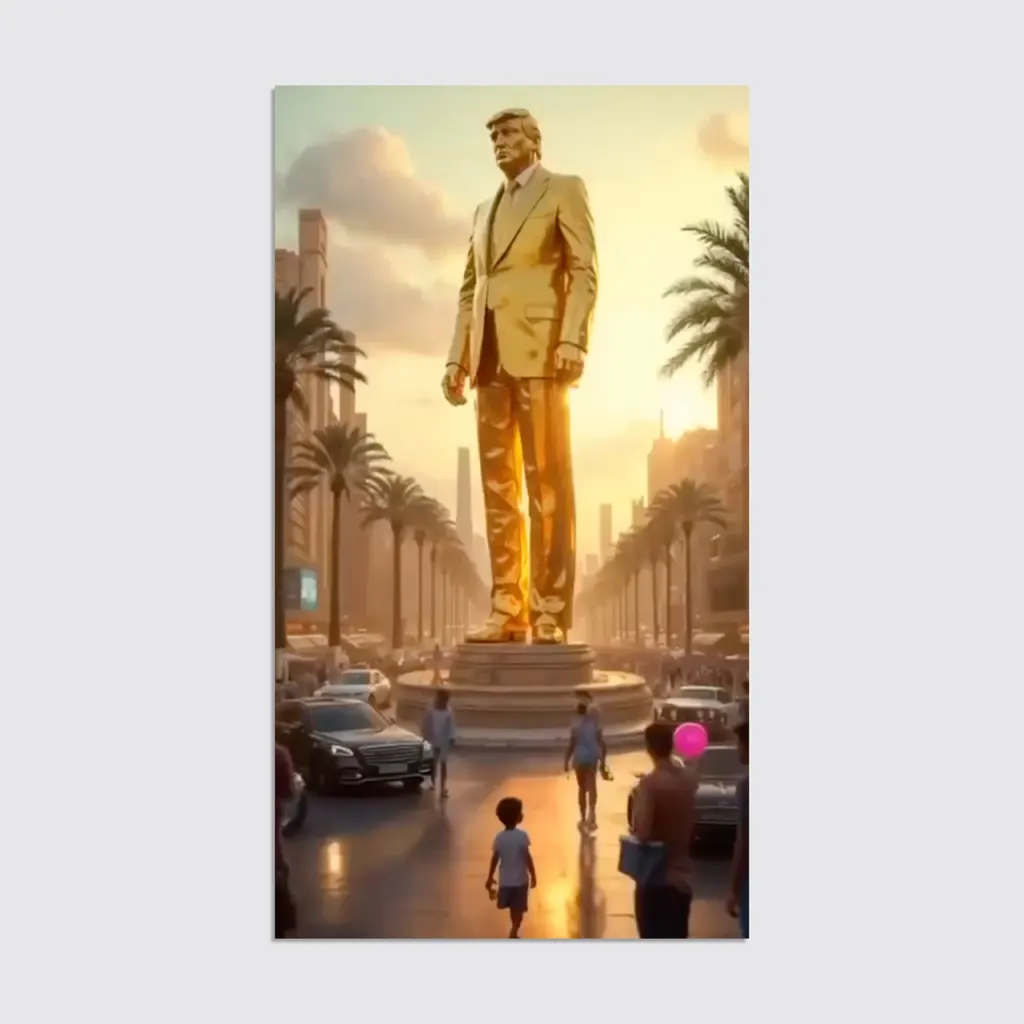
Trump’s messaging is not just anti-presidential, it’s anti-humanist. It’s somehow both vindictive and thoughtless at the same time, much like it’s both impactful and potentially irrelevant to a country already divided down the middle.
Yet despite such gross tactics behind the tweets, Rodriguez is not kept up at night by these social media plays, even though they so effectively build and expand the Trump brand with his base. Nor is he bothered much by the tweaks to DoD pages or anything written or erased on WhiteHouse.gov, which undermines history with its official stamp.
“When was the last time you started your day on WhiteHouse.gov?” he asks with a practical tone.
He’s more worried about the consequences that we’re already seeing from this erosion of truth: Trump removing the Associated Press’s access to the official White House briefings, or promoting insurrection, or discrediting the judicial system meant to keep our laws in check, or erasing billions of dollars from the budgets of universities conducting critical research.
“I don’t have an issue with you making goofy videos about Gaza. . . . My issue is the same as in Cuba where there hasn’t been an election in 60 years,” he says. “My problem is dictatorships, not free elections.” And on this topic, Trump’s design team appears to be looking ahead. Because now you can buy a Trump 2028 hat from his official store.

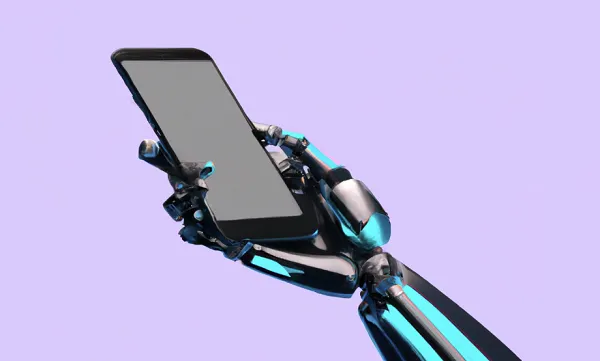


![Experts Don’t Believe AI Tools Will Lead to Mass Job Losses [Infographic]](https://imgproxy.divecdn.com/gcXE1_Da13Oz-JAszjUwb6v5UqMp2MFMjDAIXPbLad0/g:ce/rs:fit:770:435/Z3M6Ly9kaXZlc2l0ZS1zdG9yYWdlL2RpdmVpbWFnZS9haV9qb2JfbG9zc2VzLnBuZw==.webp)
